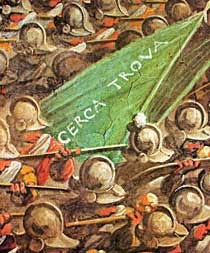
Entries are open for the 7th edition of the ETIC International Illustration Award.
The chosen theme for 2012 is ILUSTRA_CAMINHOS (ILUSTRATE_PATHS).
The event will be divided in two parts: participation, reunion and juri decision; attribution of prizes, exhibition and catalogue
ILUSTRA_CAMINHOS (ILUSTRATE_PATHS) is open to all artists worldwide.
Works must be converted into digital, independently of their original medium i.e. watercolour, photography, markers, collage, digital painting, etc.
Applicants must send their works (maximum of 2 works, exclusively in the 50x70cm format), together with an updated curriculum to
ilustra@etic.pt until June 1. The message cannot exceed 8MB.
The 30 most voted works will pass to the second part of the contest and their authors will be published at
http://www.etic.pt/ on July 16.
Those works must be sent on CD (300DPI) until July 30, to the following adress:
ETIC
A/C – Gabinete de Comunicação
Rua D. Luís I, nº 20
1200-151 Lisboa
Portugal
Submited works must be conceived by the artist, original and unpublished, not forgeting to observe the mentioned format and resolution.
On a first stage, the juri will discard submissions not according to
participation rules or miss the minimum quality requisites.
The winners of
ILUSTRA_CAMINHOS, 7th edition of the ETIC International Illustration Award, will be notified on July 31 and will receive the following prizes:
1st Prize - ETIC course voucher in the value of € 2000.
2nd Prize - ETIC course voucher in the value of € 1000.
3er Prize - ETIC course voucher in the value of € 500.
The three winners will have their works published in the
Don't Panic's pack.
All works selected for the second part will be exhibited (date yet to be determined) and published in a catalogue.
All participants will be informed by e-mail and the juri's veridict will be final.
The authors will grant to ETIC, the publication rights for the catalogue and for promotional purposes, either of the event or the school. They will also grant to sponsors, the right to use the images of the winning works, always giving credit to the respective author.
«Year 1912, an odyssey of 1300 kms in white and icy Antarctica, a violent confrontation between the human fragility and the ambition of being the first man to reach the Pole.
Finally, the objective accomplished in the form of dismay: The Norwegian flag, Roald Amundsen had been there five weeks before, "Great God! This is an awful place."
The return, five men, 670 kms crossed, at what cost, and the last lines of a diary in the middle of a snowstorm, with one man less, without energy, with no food, without hope: "Last entry. For God's sake look after our people." 1970 kms completed and death 18kms from an expedition supply station.
The painting is called Wheat Field with Crows. A field of yellow wheat ready to harvest, conveyed in thick and bold brushstrokes, where a winding path surges with fluttering black crows over it. Crossing with the horizon, the shimmering sky between blue and black in the form of a death foretold.
An old man travels 450 kms in rural America between Iowa and Wisconsin. 6 long Weeks driving a small tractor, because he doesn't have a driving permit or have anyone to take him to visit a sick and aged brother, and, above all, to re-establish a long lost friendship.
These were the paths traced respectively by Scott, Van Gogh and Alvin (the latter portrayed by David Lynch in the movie Straight Story). Paths in the snow, on canvas, on the road, that are no more than life episodes. Known for defying the limits between death and the condition of being human.
There was a time when death was explained and understood as the beginning of the path. Later, in a biassed secular society, death returned to its original perception, the end of the road. Perhaps this is why the spirit of the marathon and endurance showed by Scott, has been replaced by contemporary obssession about longevity (do not smoke, do not drink, do not eat this or that ...)
The question is whether such a long and perfect life, is synonymous with a path of love as Alvin's or has the intensity of Van Gogh's life.
From A to Z, as in the Glory Game or in closed circuit as in Monopoly, a path is always a combination of choice and luck, advances and retreats, fear and risk, gain and loss, and other people who help while others not so much... There are those who walk looking back, those who establish paths, those who simply do not walk, those who block the path, those who clear them, those who walk beside us, and those who tread new paths.
From the visual and geographic standpoint, there are paths formed by use, others are masterpieces of engineering and others that are neglected by those who prefer to fly. In another sense, the paths are not only linear platforms, straight or winding, through which we move, of one or both directions, of forbidden way, that converge or intersect with other paths, but also and above all, a continuity of people, animals, places and experiences, "it's stick, it's stone, it's the end of the road" it's Route 66, the Orient Express, the Camino de Santiago, or just the repetitive journey home-work-home. In that sense, a path is an illustration with space, time, characters, dream and memory.
One last note in a defying tone: Not all roads lead to Rome.»(a)
(a) Free translation from the original text in Portuguese by Pedro Albuquerque.












